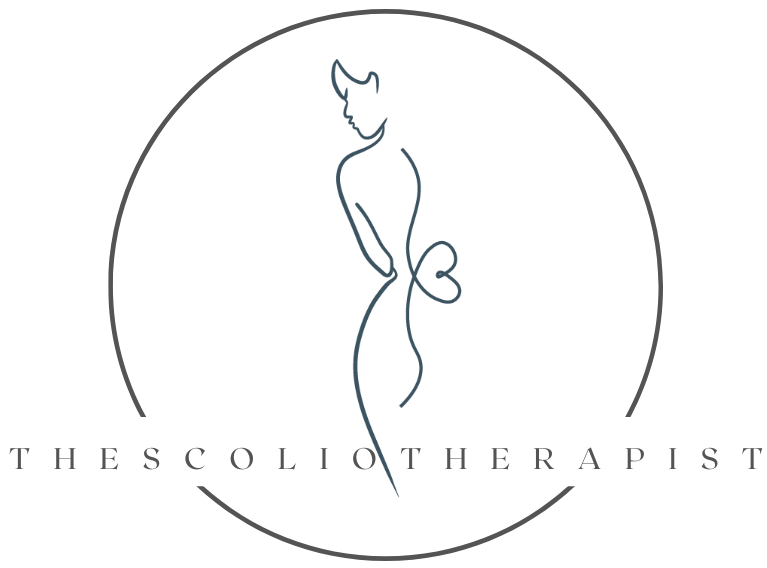Weight Lifting Exercises to Avoid with Scoliosis
Scoliosis is a complex, three-dimensional curvature of the spine that involves a minimum 10-degree Cobb angle. It’s more than just a side bend—there’s a rotational component, and even the vertebrae themselves are wedge-shaped rather than cylindrical. This unique structure creates asymmetrical loading, which can perpetuate curve progression if not managed properly.
If you have scoliosis, you may have heard some questionable advice about exercise:
“Never squat.” (How do we use the bathroom?)
“Don’t run.” (What if you need to cross the street quickly?)
“Lifting overhead will worsen your curve.” (So, forget putting a suitcase in the overhead compartment?)
While this advice is well-meaning, it often leads to confusion and fear of movement, leaving people stuck and inactive. The truth? Strength training is not only safe for scoliosis but essential!
Why Strength Training Is Crucial for Scoliosis
Strength training benefits people with scoliosis by:
Improving and maintaining bone density (especially important with higher osteoporosis risk).
Counteracting the effects of perimenopause and postmenopause on hormones.
Preventing curve progression and reducing asymmetrical strain.
Increasing overall strength and resilience.
However, not all exercises are created equal. The goal isn’t to avoid movement altogether but to modify exercises for comfort and effectiveness—especially if you’re new to strength training or prone to recurrent injuries.
Why Some Weight Lifting Exercises May Be Risky for Scoliosis
Certain exercises can exacerbate scoliosis-related issues, including:
Biomechanical stress: Uneven forces worsen curve imbalances.
Compression risks: Excessive loading can irritate the lumbar discs.
Rotation issues: High rotational forces may aggravate pain and hypermobility at transition zones.
Always consult a healthcare provider or scoliosis specialist before starting any new workout program.
Weight Lifting Exercises to Avoid (or Modify)
1. Barbell Back Squats
Why to Avoid: Axial loading and uneven weight distribution can increase spinal compression and asymmetry.
Better Option: Goblet squats or split squats, which reduce spinal compression and make it easier to maintain proper alignment.
2. Deadlifts (Especially Conventional Barbell Deadlifts)
Why to Avoid: Conventional deadlifts can lead to excessive lumbar rounding if hip hinge mechanics are insufficient. Uneven loading is also a risk.
Better Option: Trap bar deadlifts or Romanian deadlifts allow for effective hip hinging and reduce rotational stress.
3. Overhead Presses
Why to Avoid: Overhead loading increases spinal compression and highlights imbalances in shoulder and core stability.
Better Option: Landmine presses or single-arm dumbbell presses provide a safer, more controlled alternative.
4. Twisting Movements with Weight (e.g., Russian Twists)
Why to Avoid: Exaggerated spinal rotation can strain scoliosis curves and irritate hypermobile transition zones.
Better Option: Anti-rotation exercises like Pallof presses or side planks engage the obliques without unnecessary twisting.
5. High-Impact Olympic Lifts (e.g., Snatches, Cleans)
Why to Avoid: These lifts require precision, balance, and explosive movement, which can increase injury risk for people with scoliosis.
Better Option: Controlled dumbbell versions of these lifts are more manageable and allow for better form.
How to Strength Train Safely with Scoliosis
Focus on Alignment: Use mirrors or video feedback to check your form during exercises.
Start Light: Begin with lighter weights and gradually increase as your strength and stability improve.
Work with a Specialist: A scoliosis-informed coach or physical therapist can tailor your program to your needs.
Incorporate Unilateral Exercises: Single-arm or single-leg exercises help address muscle imbalances.
Prioritize Core Stability: Strengthen the deep core to support the spine during lifts. Try inhaling on the exertion to keep concavities from collapsing.
Exercises to Prioritize
1. Goblet Squats
This variation reduces lumbar strain and makes it easier to hold scoliosis-specific corrections.
2. Romanian Deadlifts
RDLs make hip hinging more achievable and reduce rotational stress compared to full-range deadlifts.
3. Dumbbell Chest Press
When performed supine, you can use wedges to support and adjust for your curve.
4. Single-Arm Rows
This unilateral exercise allows you to account for right-to-left imbalances.
5. Pallof Press Variations
These anti-rotation exercises engage the oblique line without stressing the hypermobile transition zones.
Final Thoughts
Scoliosis doesn’t mean you have to avoid weight lifting altogether—it’s about training smarter, not harder.Understanding your curve and modifying exercises accordingly can make strength training safer, more comfortable, and incredibly effective.
Strength training not only helps reduce pain and improve posture but also boosts confidence and resilience. It’s a key part of managing scoliosis and supporting long-term spine health.
If you’d like personalized guidance for your scoliosis journey, join the waitlist for the next round of the Scoliosis Strength Collective. This program is perfect for active individuals or those returning to strength training who want to stay injury-free while building strength.

